-
 Bitcoin
Bitcoin $96,508.5911
-0.92% -
 Ethereum
Ethereum $1,838.4653
-0.08% -
 Tether USDt
Tether USDt $1.0003
0.00% -
 XRP
XRP $2.2142
-0.12% -
 BNB
BNB $599.0086
-0.08% -
 Solana
Solana $148.7294
-0.87% -
 USDC
USDC $1.0000
-0.02% -
 Dogecoin
Dogecoin $0.1792
-1.10% -
 Cardano
Cardano $0.7223
2.19% -
 TRON
TRON $0.2472
0.22% -
 Sui
Sui $3.3412
-3.22% -
 Chainlink
Chainlink $14.4807
-1.60% -
 Avalanche
Avalanche $20.9283
-2.20% -
 Stellar
Stellar $0.2735
-1.33% -
 UNUS SED LEO
UNUS SED LEO $8.9254
0.08% -
 Toncoin
Toncoin $3.1646
-0.14% -
 Shiba Inu
Shiba Inu $0.0...01324
-1.68% -
 Hedera
Hedera $0.1842
-1.63% -
 Bitcoin Cash
Bitcoin Cash $369.7111
-3.04% -
 Hyperliquid
Hyperliquid $20.7437
-0.99% -
 Litecoin
Litecoin $87.2417
-1.38% -
 Polkadot
Polkadot $4.1326
-1.80% -
 Dai
Dai $1.0001
0.00% -
 Monero
Monero $279.3151
-3.07% -
 Bitget Token
Bitget Token $4.3843
-1.34% -
 Ethena USDe
Ethena USDe $1.0007
-0.01% -
 Pi
Pi $0.5876
-1.18% -
 Pepe
Pepe $0.0...08457
-3.07% -
 Uniswap
Uniswap $5.1911
-1.50% -
 Aptos
Aptos $5.2513
-3.80%
TP wallet private key and mnemonic phrase
Losing or compromising a private key, which serves as the digital signature of ownership for cryptocurrency assets, can result in irreversible loss of funds due to unauthorized access and fraudulent transactions.
Jan 11, 2025 at 01:06 pm
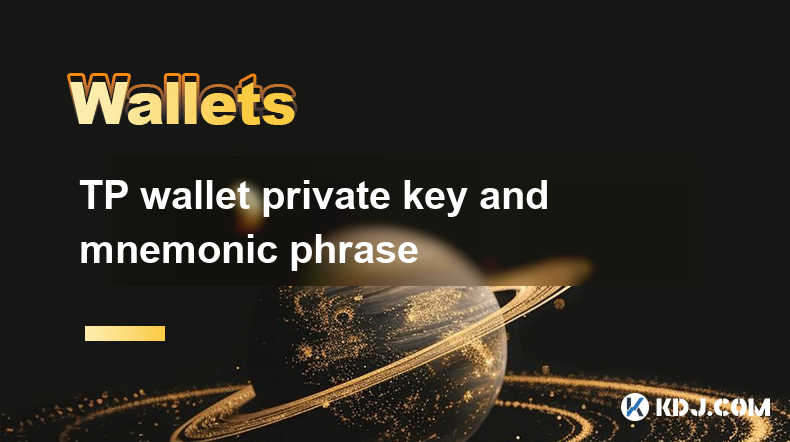
Key Points
TP Wallet Private Key
- Definition and significance of a private key
- How to securely store and manage a private key
- Potential risks associated with losing or compromising a private key
Mnemonic Phrase
- An overview of mnemonic phrases and their role in cryptocurrency wallets
- How to generate, store, and recover a mnemonic phrase
- Best practices for safeguarding a mnemonic phrase
Detailed Content
TP Wallet Private Key
- Definition and Significance of a Private Key:
A private key is a unique, cryptographically generated string that grants access to and control over the cryptocurrency assets stored in a specific blockchain address. It acts as a digital signature that proves ownership of the funds and allows authorized transactions. Losing or compromising a private key can result in irreversible loss of digital assets. - Secure Storage and Management of a Private Key:
Securely storing and managing a private key is crucial for protecting the underlying cryptocurrency assets. Best practices include storing it offline (e.g., hardware wallet, encrypted file) and using multi-factor authentication, biometric verification, or password management tools. Avoid storing the private key in plain text or sharing it with untrustworthy third parties. - Potential Risks Associated with Losing or Compromising a Private Key:
Losing or compromising a private key can have severe consequences. An unauthorized individual gaining access to the private key can deplete the corresponding cryptocurrency balance, transfer funds to their own wallet, or manipulate transactions. It is essential to take necessary precautions to safeguard the private key and avoid potential financial losses or security breaches.
Mnemonic Phrase
- Overview of Mnemonic Phrases and Their Role in Cryptocurrency Wallets:
A mnemonic phrase is a human-readable series of words used to back up and recover cryptocurrency wallets. It serves as a failsafe mechanism in case the private key is lost or forgotten. The mnemonic phrase must be stored securely, as it can be used to restore the wallet and access its contents. - Generating, Storing, and Recovering a Mnemonic Phrase:
Mnemonic phrases are typically generated by cryptocurrency wallets during the wallet creation process. They consist of a specific number and order of words from a defined wordlist. Users should note down the mnemonic phrase in a secure location and protect it from unauthorized access. In case of a lost or forgotten private key, the mnemonic phrase can be used to recover the wallet and regain control over the crypto assets. - Best Practices for Safeguarding a Mnemonic Phrase:
Protecting the mnemonic phrase is of paramount importance. Best practices for safeguarding it include: storing it offline (e.g., written on paper, stored in a password manager), splitting the phrase into multiple parts, and avoiding storing it digitally or sharing it with others. Compromising the mnemonic phrase could lead to loss of access to the cryptocurrency assets associated with the wallet.
FAQs
Q: What is the difference between a private key and a mnemonic phrase?
A: A private key is a secure, unique string used to access and control cryptocurrency assets, while a mnemonic phrase is a human-readable series of words that serves as a backup and recovery mechanism for a cryptocurrency wallet.
Q: How do I create a mnemonic phrase?
A: Most cryptocurrency wallets automatically generate a mnemonic phrase during the wallet creation process. It is imperative to write it down securely and keep it confidential.
Q: What are the best practices for storing a private key?
A: Best practices include using a hardware wallet, storing it encrypted on a separate device, and employing strong passwords and multi-factor authentication to protect the key.
Q: What happens if I lose or forget my private key?
A: Using a securely stored mnemonic phrase, you can recover access to your cryptocurrency wallet and regain control over your assets.
Disclaimer:info@kdj.com
The information provided is not trading advice. kdj.com does not assume any responsibility for any investments made based on the information provided in this article. Cryptocurrencies are highly volatile and it is highly recommended that you invest with caution after thorough research!
If you believe that the content used on this website infringes your copyright, please contact us immediately (info@kdj.com) and we will delete it promptly.
- Generative Adversarial Networks for Detecting Integer Overflow Vulnerabilities in Smart Contracts
- 2025-05-03 22:55:13
- Arizona state will not hold Bitcoin (BTC) as official reserves
- 2025-05-03 22:55:13
- Bitcoin Approaches Major Test As It Tracks Gold's Path
- 2025-05-03 22:50:13
- SHIB Price Prediction: Shiba Inu (SHIB) Could Reach a Market Cap of $1T, Stuns Investors
- 2025-05-03 22:50:13
- Bitcoin May Be Entering Its Most Bullish Phase Since 2020 – Here is Why
- 2025-05-03 22:45:13
- CME Group's Cryptocurrency Derivatives Market Posted a Steep Increase in Trading Activity in April
- 2025-05-03 22:45:13
Related knowledge
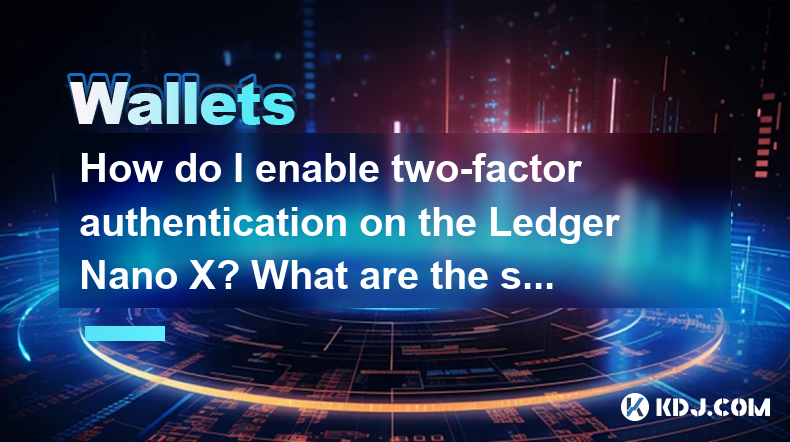
How do I enable two-factor authentication on the Ledger Nano X? What are the security options?
May 02,2025 at 09:49pm
Enabling two-factor authentication (2FA) on your Ledger Nano X is a critical step in securing your cryptocurrency assets. The Ledger Nano X offers robust security options that enhance the protection of your digital wealth. In this article, we will guide you through the process of enabling 2FA on your Ledger Nano X and explore the various security featur...
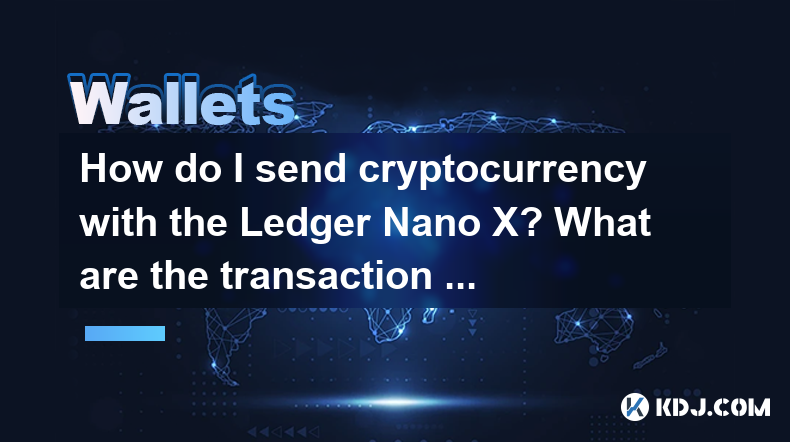
How do I send cryptocurrency with the Ledger Nano X? What are the transaction confirmation steps?
May 03,2025 at 05:01am
Sending cryptocurrency using the Ledger Nano X involves a series of steps that ensure the security and accuracy of your transactions. This process is designed to be user-friendly while maintaining the high level of security that Ledger devices are known for. In this article, we will guide you through the process of sending cryptocurrency with the Ledger...
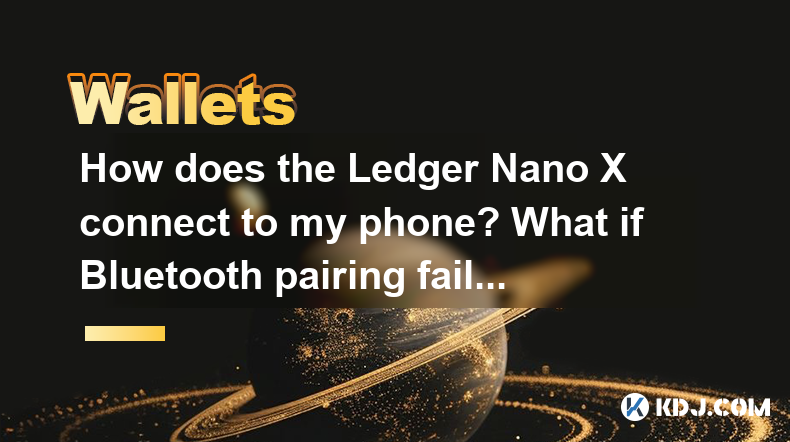
How does the Ledger Nano X connect to my phone? What if Bluetooth pairing fails?
May 02,2025 at 07:07pm
The Ledger Nano X is a popular hardware wallet designed to securely store your cryptocurrency. One of its key features is the ability to connect to your smartphone via Bluetooth, allowing for a seamless and convenient user experience. In this article, we will explore how to connect your Ledger Nano X to your phone and what to do if Bluetooth pairing fai...

How do I update the Ledger Nano X firmware? What if the update fails?
May 02,2025 at 06:00am
Updating the firmware of your Ledger Nano X is an essential process to ensure that your device remains secure and fully functional. The Ledger Nano X is a popular hardware wallet used for storing various cryptocurrencies safely. In this article, we will guide you through the step-by-step process of updating the firmware, and we will also address what to...
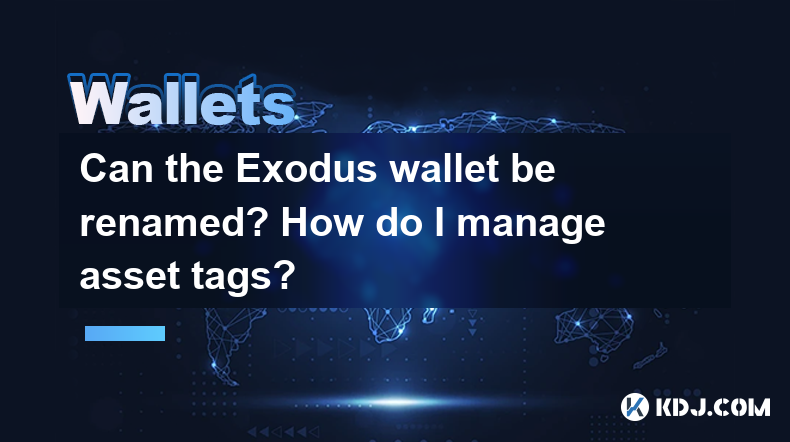
Can the Exodus wallet be renamed? How do I manage asset tags?
May 02,2025 at 11:49pm
Can the Exodus Wallet Be Renamed?Exodus wallet, a popular choice among cryptocurrency enthusiasts, offers a user-friendly interface and robust security features. One of the frequently asked questions by its users is whether the wallet can be renamed. The answer is yes, you can rename your Exodus wallet. This feature allows users to personalize their wal...
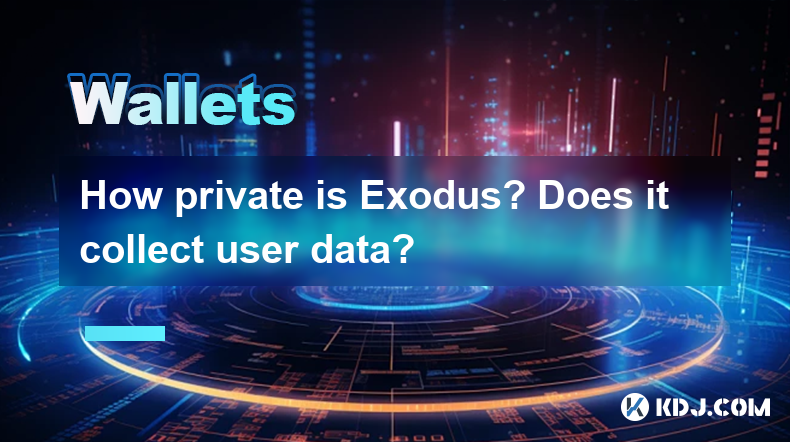
How private is Exodus? Does it collect user data?
May 03,2025 at 01:49am
How Private is Exodus? Does it Collect User Data? Exodus is a popular cryptocurrency wallet that prides itself on its user-friendly interface and robust features. However, when it comes to privacy and data collection, many users are curious about how private Exodus really is and whether it collects user data. In this article, we will delve into the priv...

How do I enable two-factor authentication on the Ledger Nano X? What are the security options?
May 02,2025 at 09:49pm
Enabling two-factor authentication (2FA) on your Ledger Nano X is a critical step in securing your cryptocurrency assets. The Ledger Nano X offers robust security options that enhance the protection of your digital wealth. In this article, we will guide you through the process of enabling 2FA on your Ledger Nano X and explore the various security featur...

How do I send cryptocurrency with the Ledger Nano X? What are the transaction confirmation steps?
May 03,2025 at 05:01am
Sending cryptocurrency using the Ledger Nano X involves a series of steps that ensure the security and accuracy of your transactions. This process is designed to be user-friendly while maintaining the high level of security that Ledger devices are known for. In this article, we will guide you through the process of sending cryptocurrency with the Ledger...

How does the Ledger Nano X connect to my phone? What if Bluetooth pairing fails?
May 02,2025 at 07:07pm
The Ledger Nano X is a popular hardware wallet designed to securely store your cryptocurrency. One of its key features is the ability to connect to your smartphone via Bluetooth, allowing for a seamless and convenient user experience. In this article, we will explore how to connect your Ledger Nano X to your phone and what to do if Bluetooth pairing fai...

How do I update the Ledger Nano X firmware? What if the update fails?
May 02,2025 at 06:00am
Updating the firmware of your Ledger Nano X is an essential process to ensure that your device remains secure and fully functional. The Ledger Nano X is a popular hardware wallet used for storing various cryptocurrencies safely. In this article, we will guide you through the step-by-step process of updating the firmware, and we will also address what to...

Can the Exodus wallet be renamed? How do I manage asset tags?
May 02,2025 at 11:49pm
Can the Exodus Wallet Be Renamed?Exodus wallet, a popular choice among cryptocurrency enthusiasts, offers a user-friendly interface and robust security features. One of the frequently asked questions by its users is whether the wallet can be renamed. The answer is yes, you can rename your Exodus wallet. This feature allows users to personalize their wal...

How private is Exodus? Does it collect user data?
May 03,2025 at 01:49am
How Private is Exodus? Does it Collect User Data? Exodus is a popular cryptocurrency wallet that prides itself on its user-friendly interface and robust features. However, when it comes to privacy and data collection, many users are curious about how private Exodus really is and whether it collects user data. In this article, we will delve into the priv...
See all articles




















































































